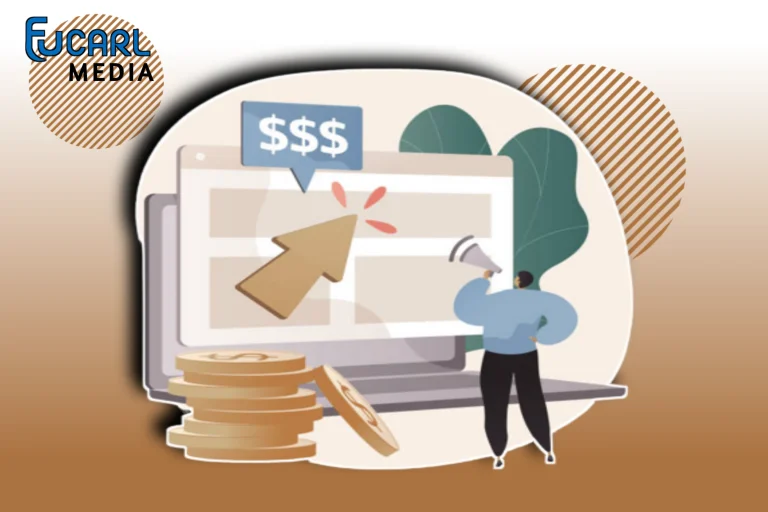URL Meaning And Its 3 Most Important Parts Explained
Let’s assume that your website is your home; in this case, the URL would be analogous to your home address. That is to say, if you want to go to a website, you must first find the website URL link.
Your website can also be found with the help of your it’s URL code since it enables Google to better understand the content of your website’s page in comparison to the content of other websites.
This is exactly the topic that we are going to be talking about in this blog post, titled “URL Meaning and Its 3 Important Parts Explained,” to gain an understanding of its significance in search engine optimization.
In addition to that, we are also going to explore: the “Where is the URL located? How to open a URL And how do you create your own URL? You will also learn what characters are not allowed in a URL and much more.
Please refrain from clicking the back button!
URL meaning?
What is the full meaning of URL? You could ask. On the other hand, URL is an abbreviation for “Uniform Resource Locator.” You can think of a universal resource locator, or URL, as the address of a unique resource on any website.
In a nutshell, every website URL link will take you to a different resource. These one-of-a-kind Web resources might be something like an image, a page written in HTML, or a document written in CSS, to mention a few examples.
Since these online resources directly represent the URL and belong to the web server, it is now up to the owner of the webserver to always manage the resources and their URL. This is because these web resources directly belong to the web server.
The 3 most important parts of a website URL link explained

In the following paragraphs, we will go through the 3 components of a short URL link that are considered to be the most vital.
When combined, these 3 components of a URL will lay a greater emphasis on the question “What is a URL?” in order to get a deeper level of comprehension regarding the format.
Let’s being!
1st Section: The Protocol
Take a look at the following example URL:
(https://eucarlmedia.com/what-is-indexing-why-is-it-important-in-seo/)
At this time, the protocol may be seen at the very beginning of each and every website URL link. It can be recognized as the “https://” or “hhttp://” tag. And it’s crucial that you understand this section.
This protocol tells every browser how to interact with the landing page server of any website. This lets them send and receive information as quickly as possible.
But the HTTPS (Hypertext Transfer Protocol) short URL link that was used before HTTPS (Hypertext Transfer Protocol Secure) was used is now useless.
However, the HTTPS (Hypertext Transfer Protocol) short URL link was previously in use before the adoption of the more secured HTTPS (Hypertext Transfer Protocol Secure) came into use.
Note that the security level of a website that has an HTTPS tag has a tendency to be higher than the security level of a website that uses the older HTTP tag. Because of this, almost all websites show a green security padlock next to the HTTPS tag.
2nd Section: The domain name
Let’s take a quick trip back to the short URL link for a second:
(https://eucarlmedia.com/what-is-indexing-why-is-it-important-in-seo/)
Having understood the meaning of URL and what it stands for, you may have noticed that the domain name of the website URL link that was provided earlier is “eucarlmedia.com.” A domain name is the name of a website that is used to identify the website.
This domain name of a short URL link always consists of two parts, and those components are as follows: “the domain name of the website, as well as the top-level domain (TLD). The most common top-level domains (TLDs) are .com, .org, .ng, and .net.
The success of your website is significantly impacted by the domain name you choose. Your website’s exposure and the rate at which it is indexed will both rise if the domain name is connected to the subject matter of your specialty.
If you want to check the optimization and visibility quality of your domain name, use a tool like SEO ranking goosuggest.com.
3rd Section: The Path URL
whereas we will continue to use our usual website URL link sample:
(https://eucarlmedia.com/what-is-indexing-why-is-it-important-in-seo/)
The next piece of information that we would like to share with you is that the “Path” section can be found directly after the section that contains the TLD (.com).
This “path” is what navigates each person straight to a particular web page and is what we refer to as the “path.” In our case, clicking on it will take you to the homepage of EucarlMedia, and you can then proceed to the topic itself.
As a WordPress user, you have complete control over the appearance of the “Path” column. Thanks to WordPress, you can change your site’s “permalinks” and “metadata” to suit the tastes of your readers.
To accomplish this, simply go to your dashboard, select “Settings,” and look for the “Permalinks” category in the drop-down menu that appears. When you do discover it, you will have the ability to modify it in order to get a better short URL link.
Where is the URL located?

Another essential inquiry that we are frequently asked regarding URLs is, “What is a URL and where is it located?” Now that we have answered “URL meaning”, let’s talk about where it is located.
How do I find my URL? A website URL link is either always there in the address bar or Omnibox at the top of every browser window.
On desktop devices, such as laptops and desktop PCs, the valid URL code is always displayed, with the exception of instances in which the page is displayed in full-screen mode. On the other hand, when you scroll down on a smartphone, the URL frequently disappears.
Simply scroll back up to the top, and it will be there for you to recover. If you can’t see the full domain name, click on the bar to view the complete website URL link again.
How to open a URL
The process of opening a link to a website’s URL is fairly simple. If the code for the URL is entered into a hyperlink that is included within a paragraph, then selecting the text of the hyperlink will cause the URL to open in a new tab or window when it is clicked on.
However, if the short URL link is included in printed material that does not have a hyperlink, then all that is required to open the page is for you to type the URL into the address bar of any of your browsers.
If you get an email with a link to a website URL link, you can make it even easier and faster to get to the site by copying the link and pasting it into the address bar of your browser.
How do I create a URL link?
Several alternative procedures can be used to generate links to the personalized website URL link. When you want to create a landing page, you can also create personalized directories that can be linked to your website.
To create a one-of-a-kind URL code that is related to the name of your website, such as: “Eucarlmedia.com,” you will need to purchase a custom domain from a domain name registrar.
These firms focus on selling and registering domain names for businesses. Domain names can be linked to a company’s website or routed to any other Web page of the customer’s choosing.
Following the completion of the purchase, you will be required to make annual domain renewals. The price, on the other hand, is determined by a variety of factors, one of which is the type of TLD that the domain name has (.com, .ng, and so on).
You can also create your customized short URL through some website builders such as Wix, Weebly, or others. Nevertheless, the following are some of the most common domain name registrars:
- Bluehost
- Google Domains
- GoDaddy
- Solutions for Networking
- DreamHost (plural)
Choosing the correct domain name registrar is extremely important because it is also a component that impacts how well your website performs overall in SERPs and how secure your website is.
What characters are not allowed in a URL?
Let’s continue providing you with excess and overloading you with valuable information, shall we?
The following piece of useful knowledge that I will share with you is about the characters that are permitted in a URL and those that are not permitted.
- To begin, the character “space” should NOT be included in a website URL link.
- Despite this, a URL code may include both alphabetic and numeric characters.
- You may also include characters such as the following in your work: !$-+*'()
- You will need to use encoding for any additional characters that you want to include in your URL.
Additionally, read: Buy Quality Backlinks? See What Google Wants From You
Wrapping up the URL meaning

This blog post that has described “URL Meaning” and has given the answer to “What is the full meaning of URL?” queries is going to come to a close by providing a summary of its significance, which will be our final point.
It is impossible to stress the importance of a website URL link because it can represent any of your web pages that are now live on the Internet and functions as a gateway that brings visitors to your website.
This indicates that to increase the amount of traffic that comes to your website, you will need to use an advanced degree of search engine optimization strategy and optimize the URL code that is present on each page of your website.
For the time being, that will have to do!
Don’t forget to sign up for our newsletter so that we can quickly get in touch with you when we publish our next blog article on our website.






